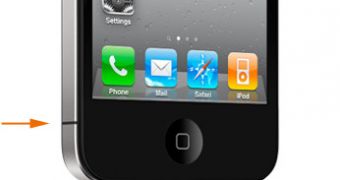On a web page dedicated to explaining smartphone antenna performance, Apple nearly every smartphone can lose signal strength, if the user holds it in a certain way. To demonstrate this, Apple tested iPhone 4 against other smartphones, including the BlackBerry Bold 9700, HTC Droid Eris, Nokia N97 mini (newly added), Samsung Omnia II, as well as its own iPhone 3GS.
Trying to convince visitors that its tests are unbiased, Apple claims that iPhone 3GS dropped from three bars to one bar when held in a way that attenuated the signal. In iPhone 4 tests, the bars dropped from three units to one, just like the iPhone 3GS, when held in a way that attenuated the signal.
Other smartphones use different bar display systems. For example, in Apple’s tests, the BlackBerry Bold 9700 dropped from 5 bars to 1 bar when held in a way that attenuated the signal. The HTC Droid Eris dropped from 4 bars to 0 bars. Nokia N97 mini dropped from 7 bars to 2. While Samsung Omnia II dropped from 4 bars to 1 bar. For each tested phone, Apple provides relevant imagery. For its move, the company is facing a backlash from smartphone vendors whose phones are featured on the new web page.
“The opposite of amplification, attenuation happens whenever a signal is obstructed. All antennas — including television, radio, GPS, and cellular antennas — can experience attenuation,” Apple explains. “And with most antennas, the density and composition of the human hand can cause attenuation to a greater degree than some other materials. On a mobile phone, signal loss typically occurs when your hand attenuates the most sensitive part of the antenna.”
Apple claims to have invested more than $100 million building its advanced antenna design and test labs, which include 17 anechoic chambers. A closer look at Apple’s state-of-the-art testing facilities is available here.

 14 DAY TRIAL //
14 DAY TRIAL //